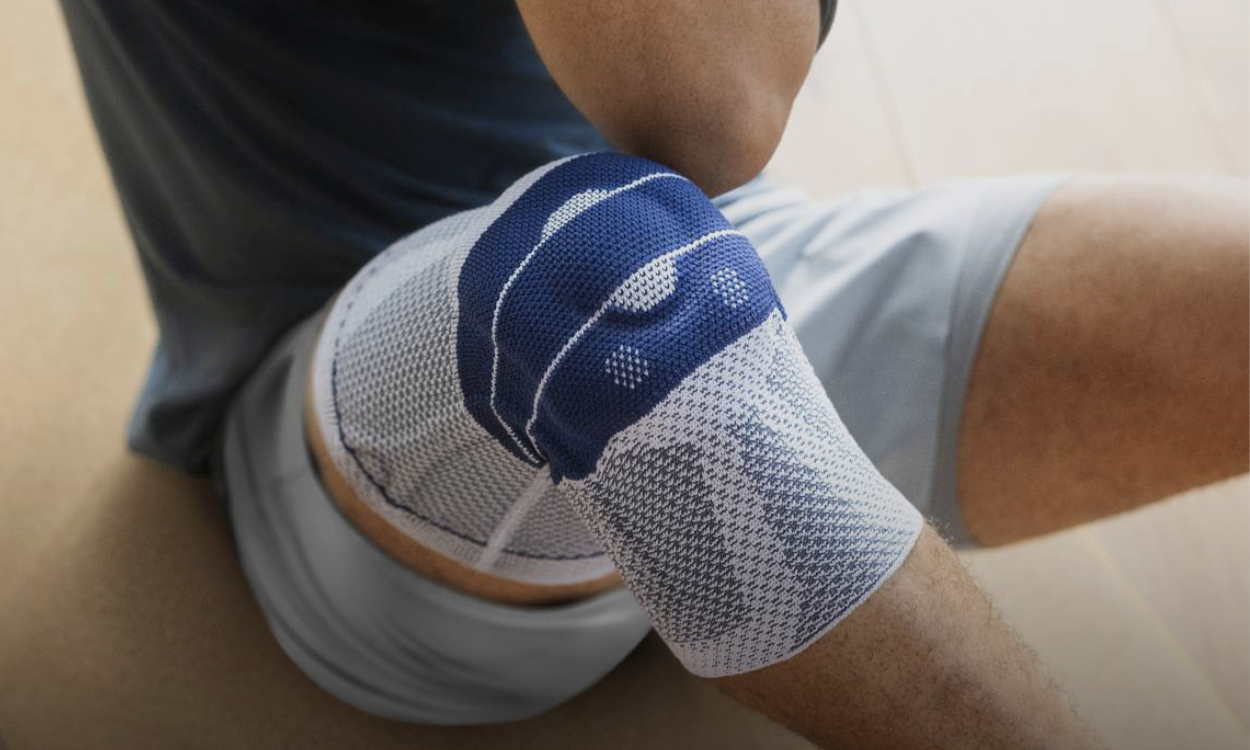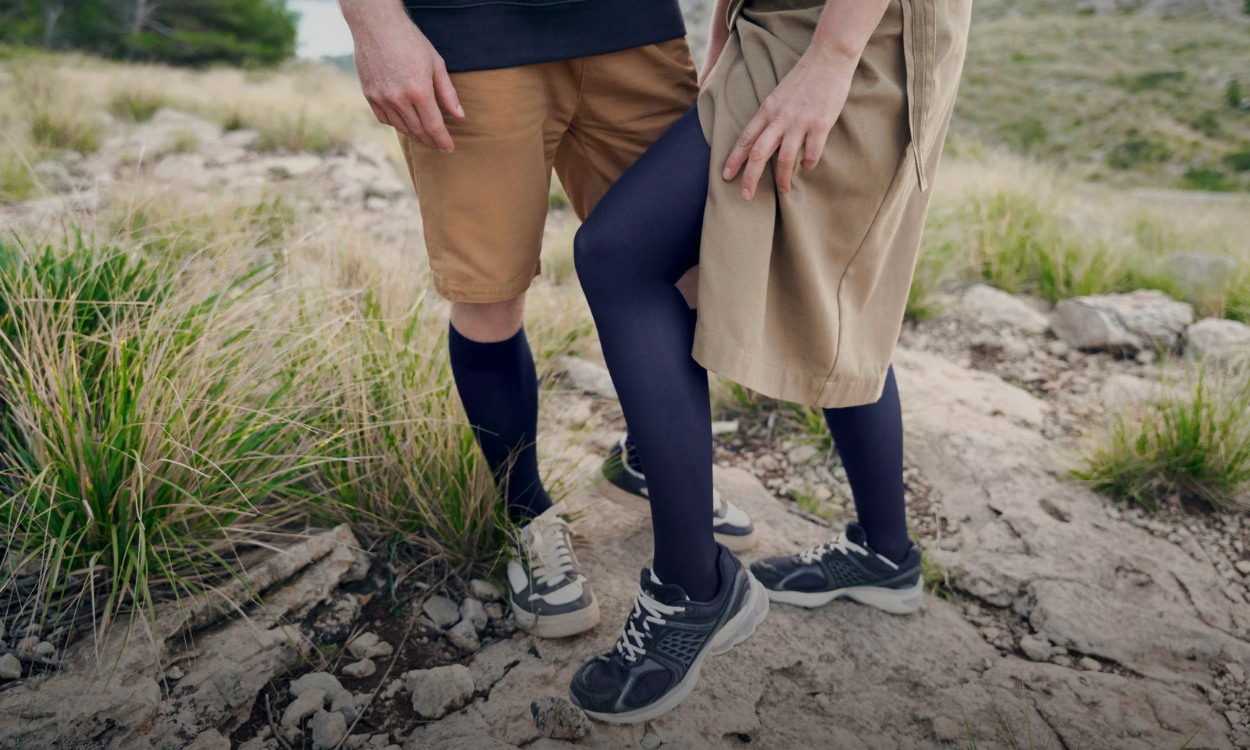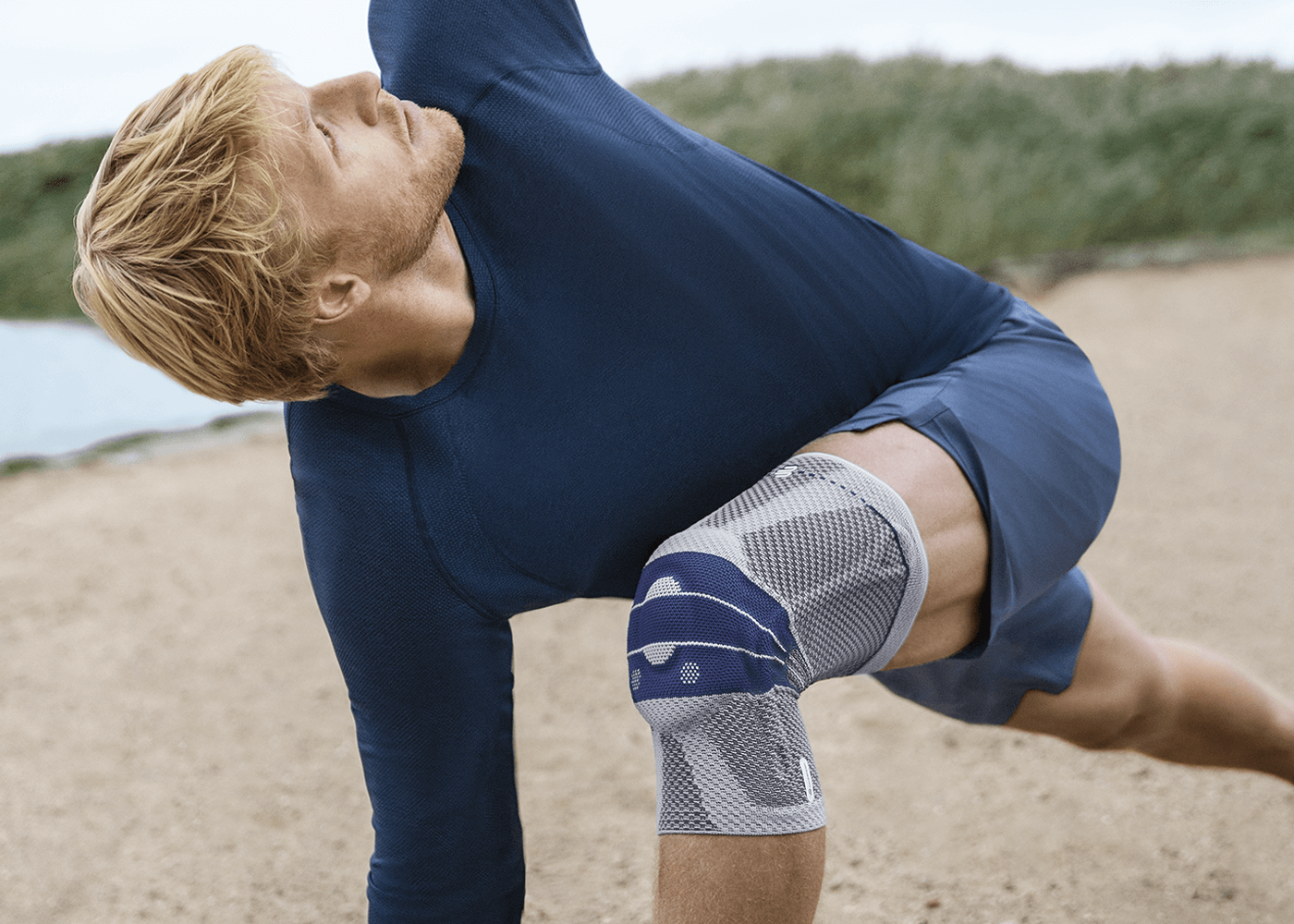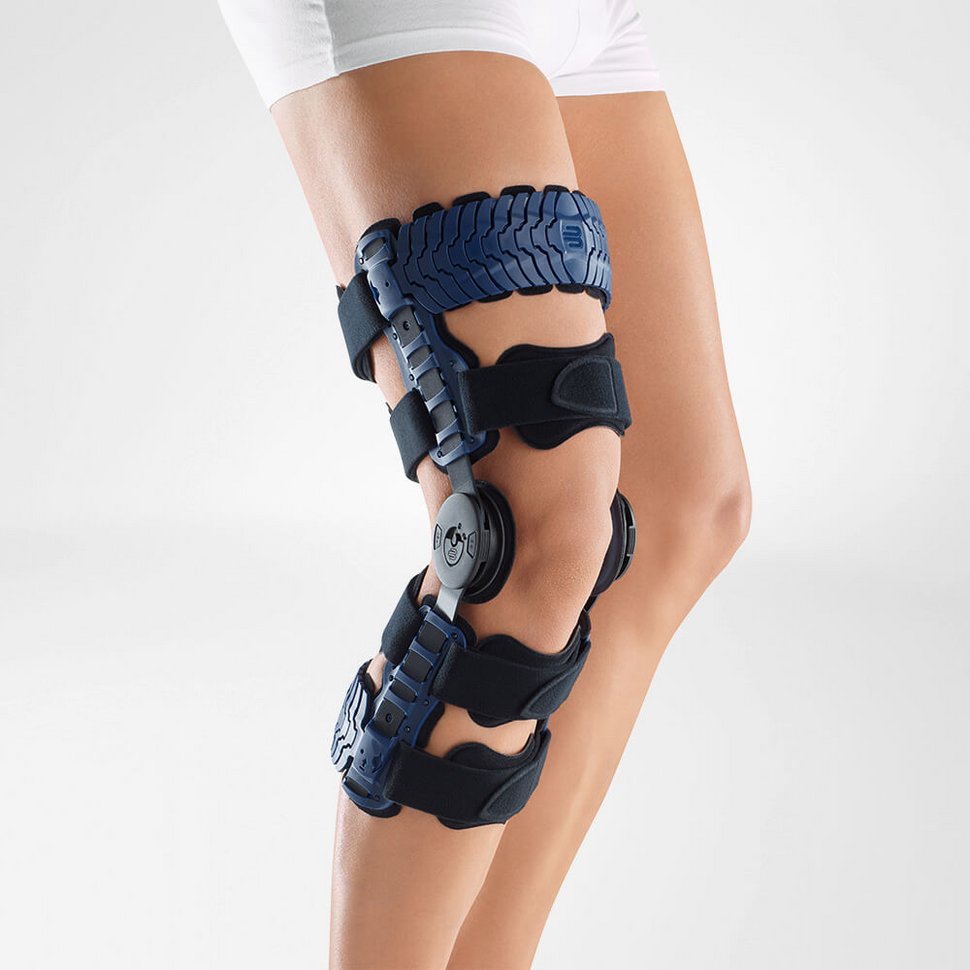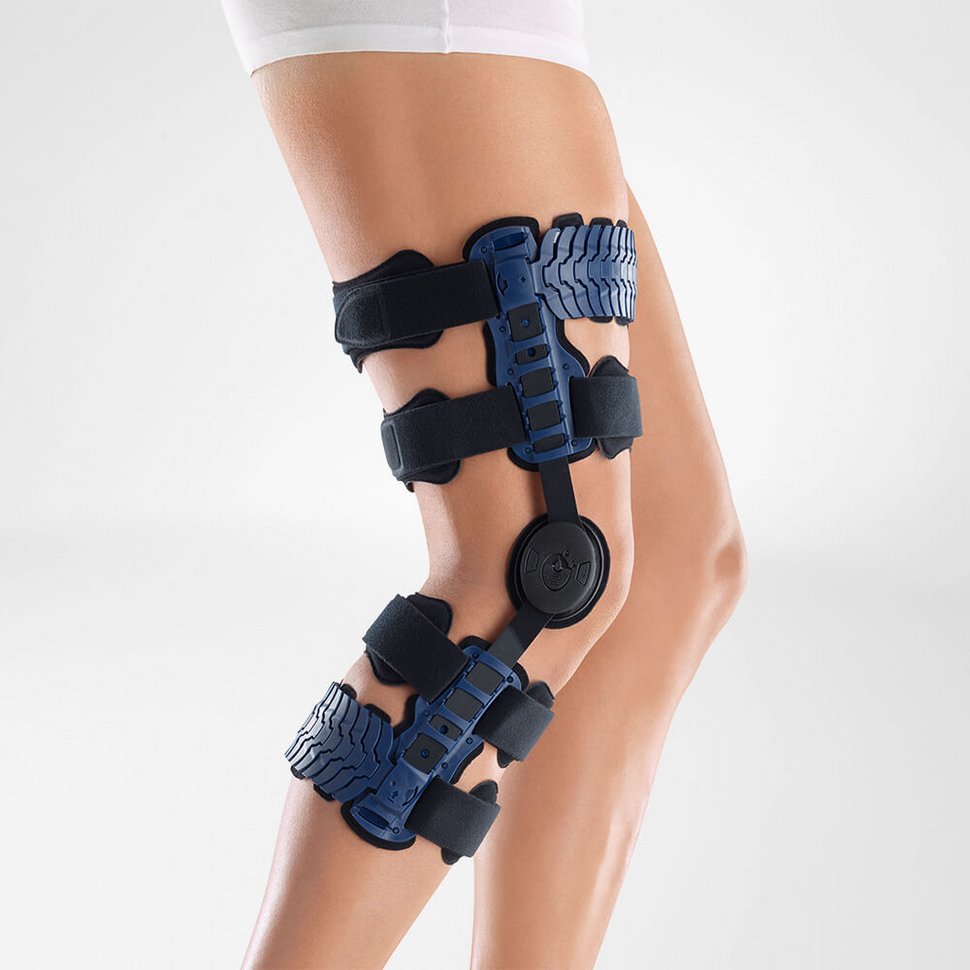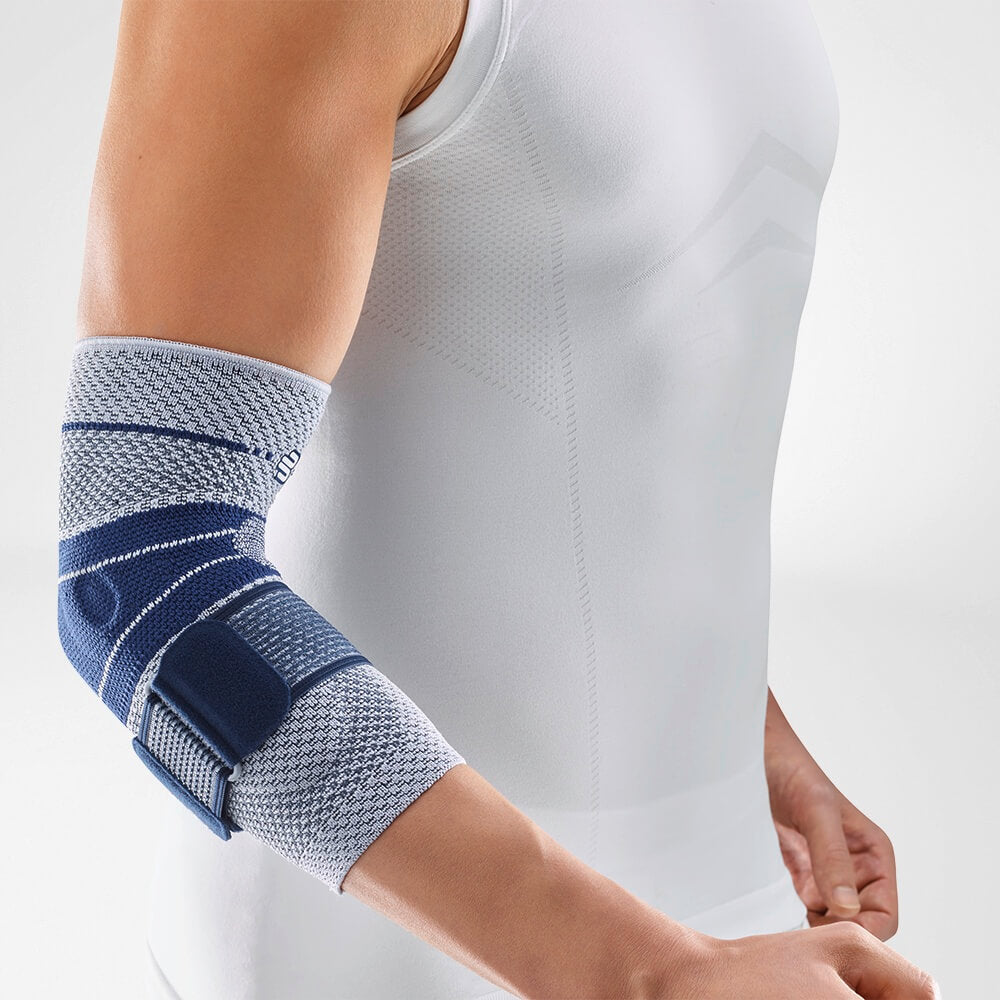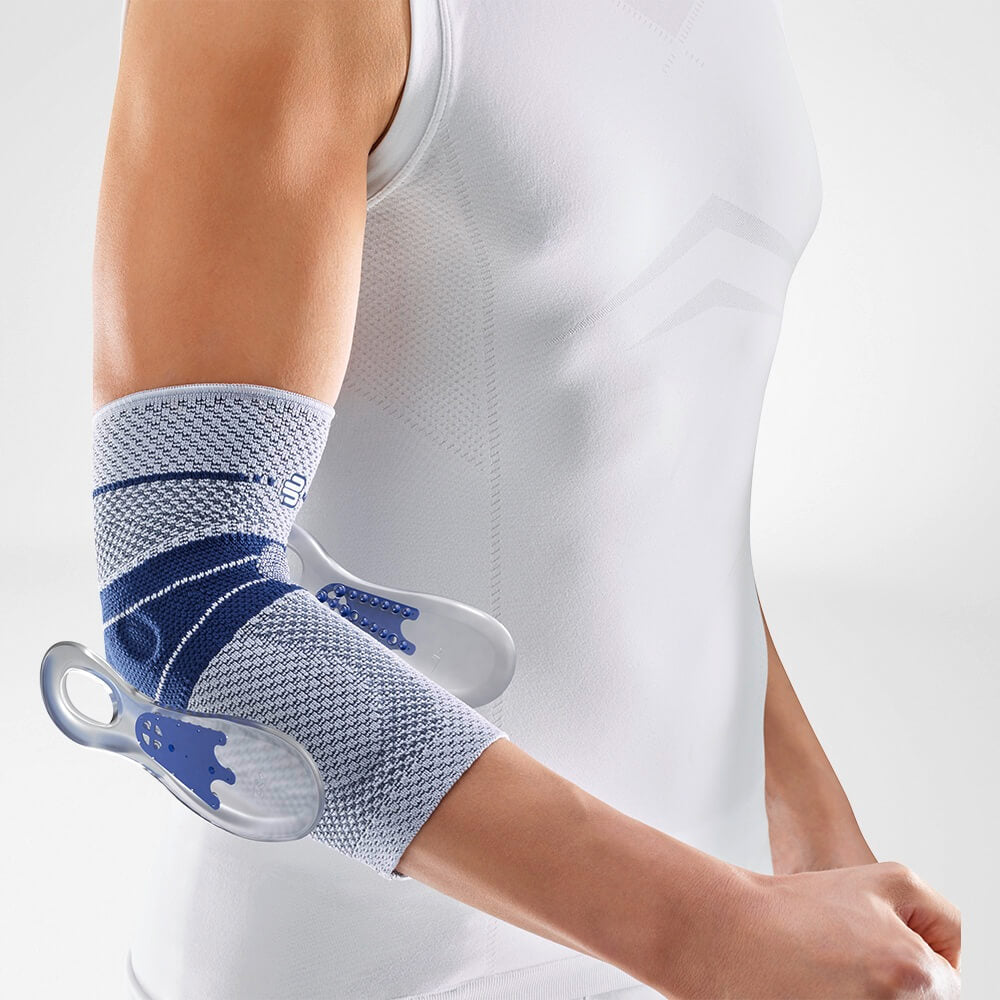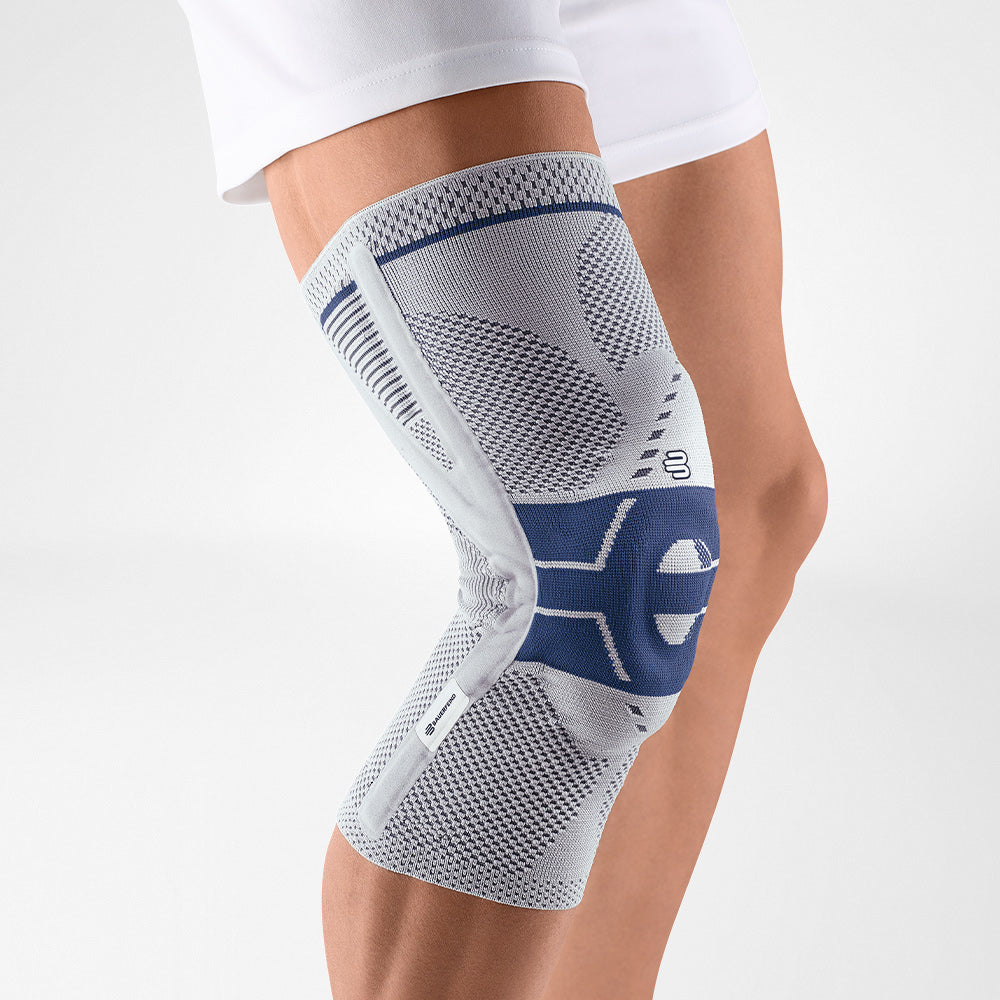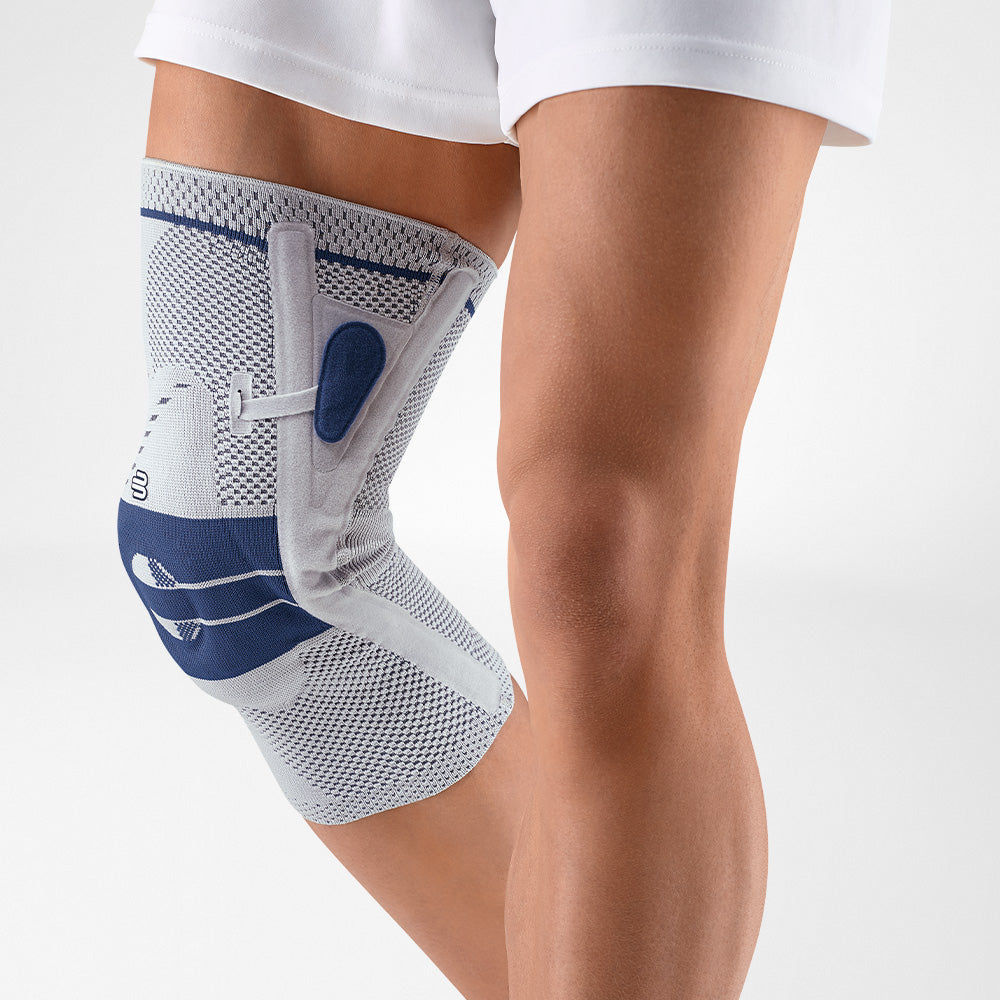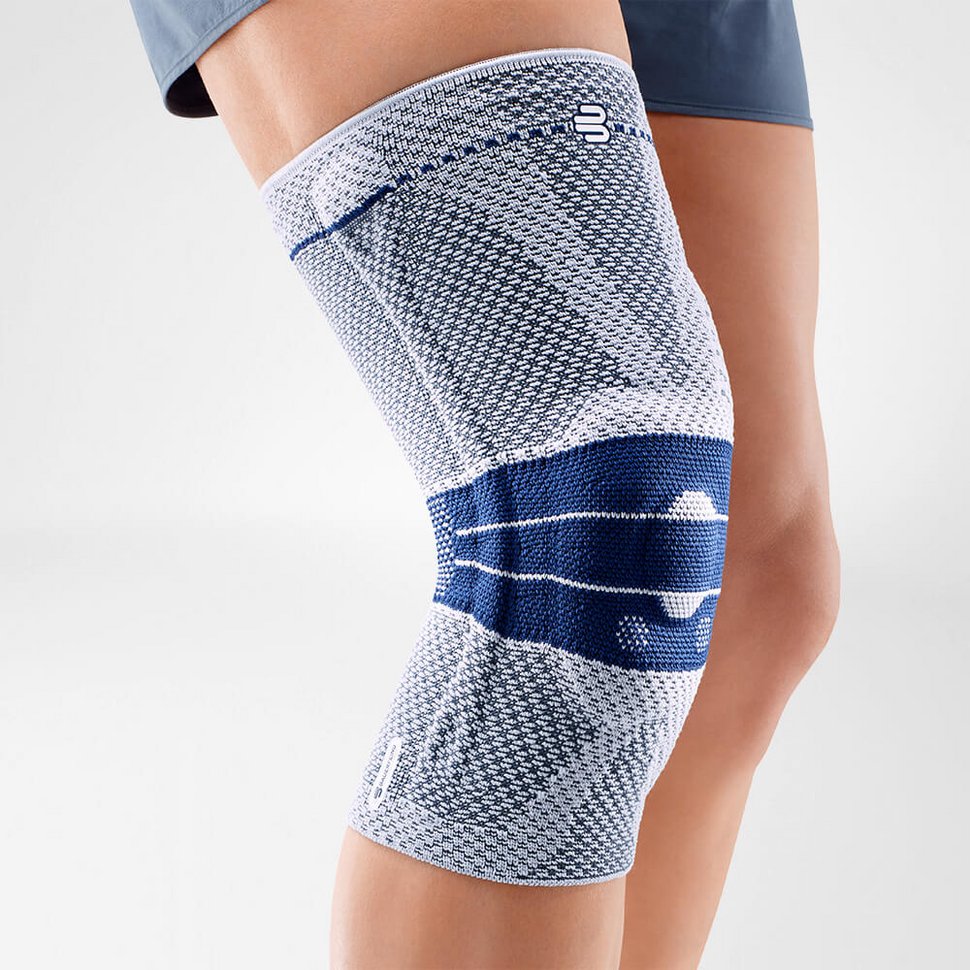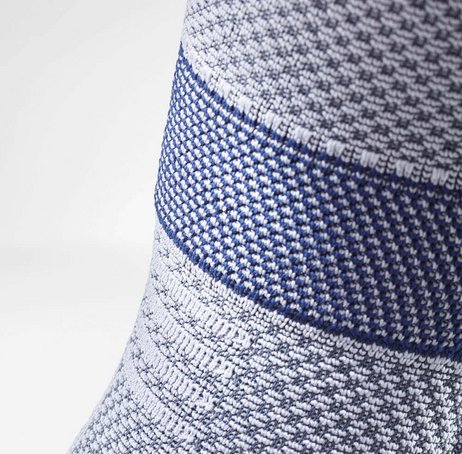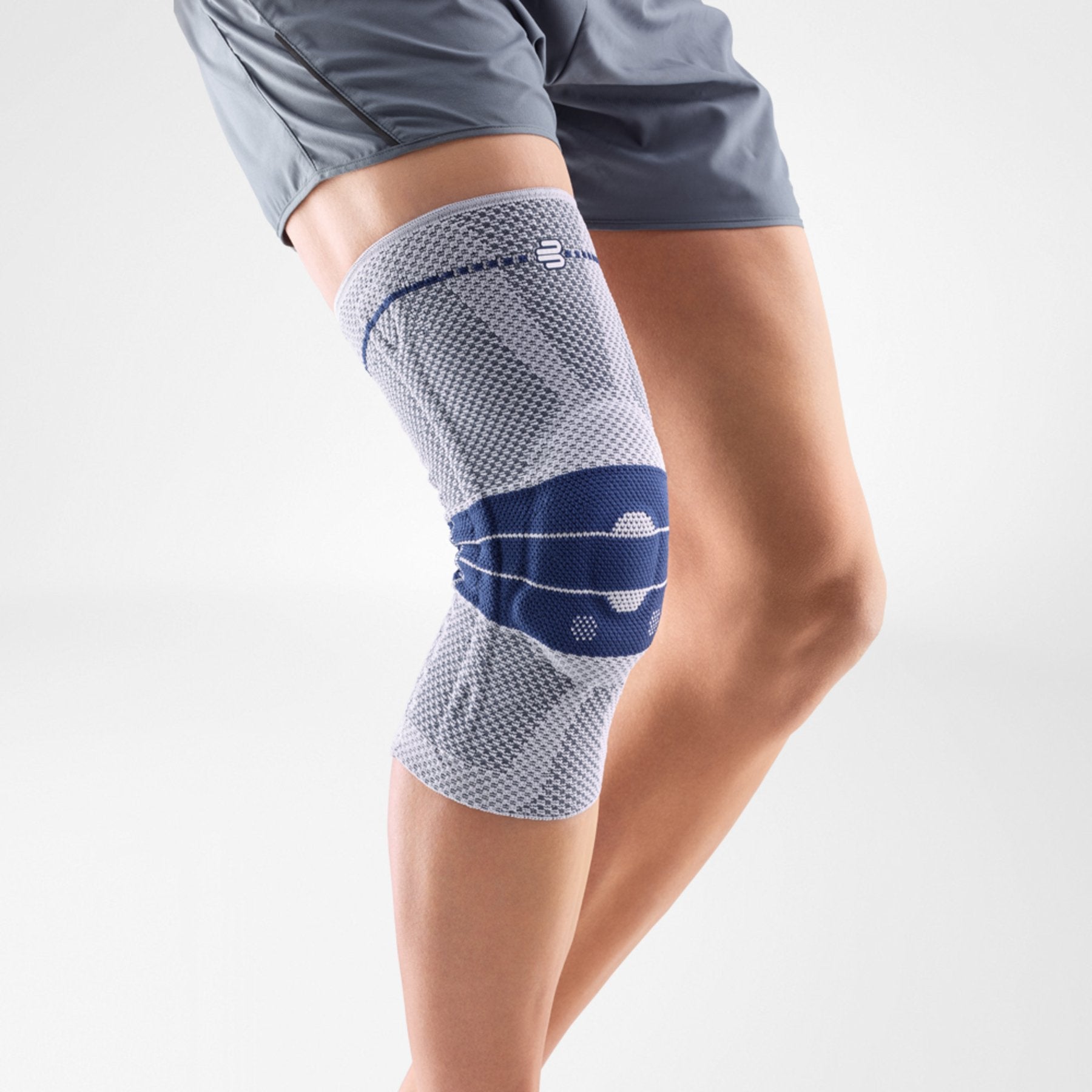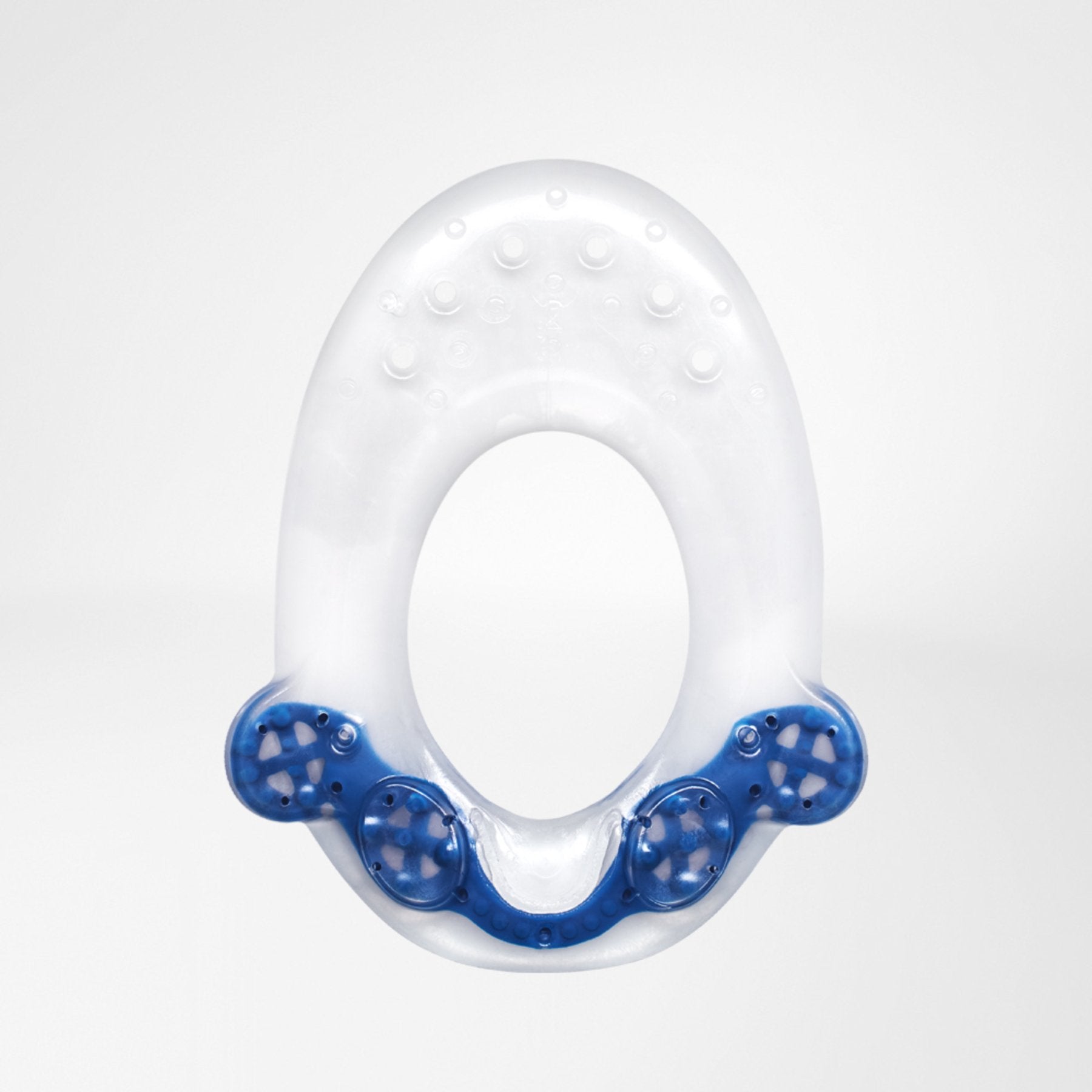SIX PRACTICAL EXERCISES FOR KNEE PAIN
Movement and exercise are crucial elements of of our overall wellbeing. Often times, knee pain can be a huge factor keeping us from being active. With the right training and support, you can alleviate knee pain by strengthening your muscles and joints.
Exercise is the Best Medicine
In many cases of knee pain, it is true that regular exercise and stretching is the best medicine. In order to comfortably begin activity however, sometimes we need some additional support. The GenuTrain was designed as an active knee brace which produces its most beneficial effect primarily during movement. It stabilizes the joints, relieves pain and activates the muscles. In this way, it promotes faster regeneration and contributes to safe mobilization.
Setup With Care
The correct positioning of the feet and knees is of great importance when it comes to the stability of the knee joint. It is therefore important to make sure that before beginning exercise you are set up and positioned correctly. Typically you should begin standing with your feet hip-width apart and your toes stretched forward. Distribute your weight evenly on your heel and forefoot and make sure to keep a slight bend in the knees.
Exercise 1: Two-Legged Squats

The two-legged squat strengthens the rear and front muscle groups at the same time. This gives your legs more strength and stability.
Execution:
Stand with your legs hip-width apart.
Bend your knees slightly.
Squat down until your knees are bent about 45 degrees.
Always keep your back straight.
Tips:
- The deeper you go down, the harder it gets. Make sure to keep your buttocks above your knee joints and ensure that your knees do not go out further than your feet.
- Make sure to put even weight on both legs.
Exercise 2: One-Legged Balance

With the one-legged balance, you improve your balance and knee stability by strengthening the entire leg and core muscles.
Execution:
Keep your feet parallel and hip-width apart.
Bend your knees slightly and load them evenly.
The middle of the kneecap points towards the big toe.
Lift one foot off the floor.
Hold this position for 30 seconds and repeat on next leg.
Tips:
- Make sure you keep the knee flexed slightly in the standing leg.
- You can hold onto a chair if you are unsure of your balance.
Exercise 3: One-Legged Scissor Stand

The scissors one-legged stance strengthens your knee muscles. This improves balance, coordination and responsiveness.
Execution:
Walk in stride.
Place your front foot on a rolled towel.
Bend your front knee slightly.
Take alternating steps brining your back leg forward and so on.
Always cross the center line before putting your foot down.
Tips:
- With the standing leg, make sure that the kneecap always points towards the big toe and that the knee is slightly bent.
- If you find it difficult to stand on the towel roll, you can remove it.
- If the exercise seems very easy to you, close your eyes.
Exercise 4: Back Lunge

In order to keep the knee stable, coordination and muscle strength are required. You promote both with the backwards lunge.
Execution:
Stand your legs hip-width apart and back straight.
Take a step back and lower your back knee at the same time.
Lightly tap the floor with your knee.
Come back to the starting position and repeat the movement alternately with right and left legs.
Tips:
- If the exercise is difficult for you, you can briefly rest your knee on the floor.
Exercise 5: Front Lunge

With the forward lunge you activate the anterior and posterior thigh muscles and improve coordination and balance.
Execution:
Stand your legs hip-width apart and back straight.
Take a step forward.
Lightly tap the floor with your back knee.
Come back to the starting position and repeat the movement alternately with right and left legs.
Tips:
- Only go as deep as your knees can support.
- If the exercise is difficult for you, you can briefly rest your knee on the floor.
Exercise 6: Five Point Stance

This exercise will keep your knees flexible.
Execution:
Imagine a square on the floor. Now stand in the middle.
Lift your right leg a little off the floor.
Place more weight on the outer edge of your left foot and bend your knee slightly.
The tip of your right toe now taps the corner points of the square in a clockwise direction.
Briefly tap your left foot with the right after each corner before moving on to the next.
Make sure to keep your left knee directly over your foot at all times.
Repeat the movement until you complete the square, then switch sides.
Tips:
- If the exercise is too difficult for you, hold onto a chair while doing it.
- The further you set the corner points apart, the more difficult it will be to keep the supporting leg stable. So don't imagine the square to be too big.

